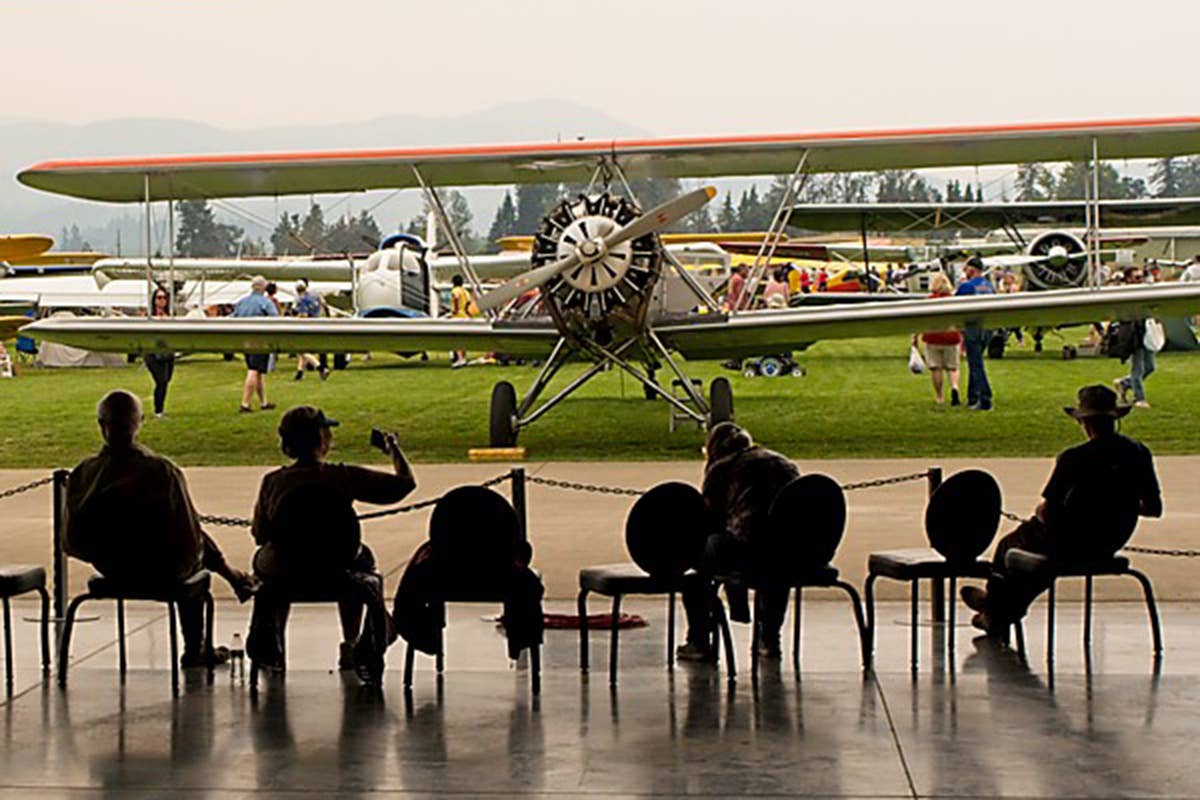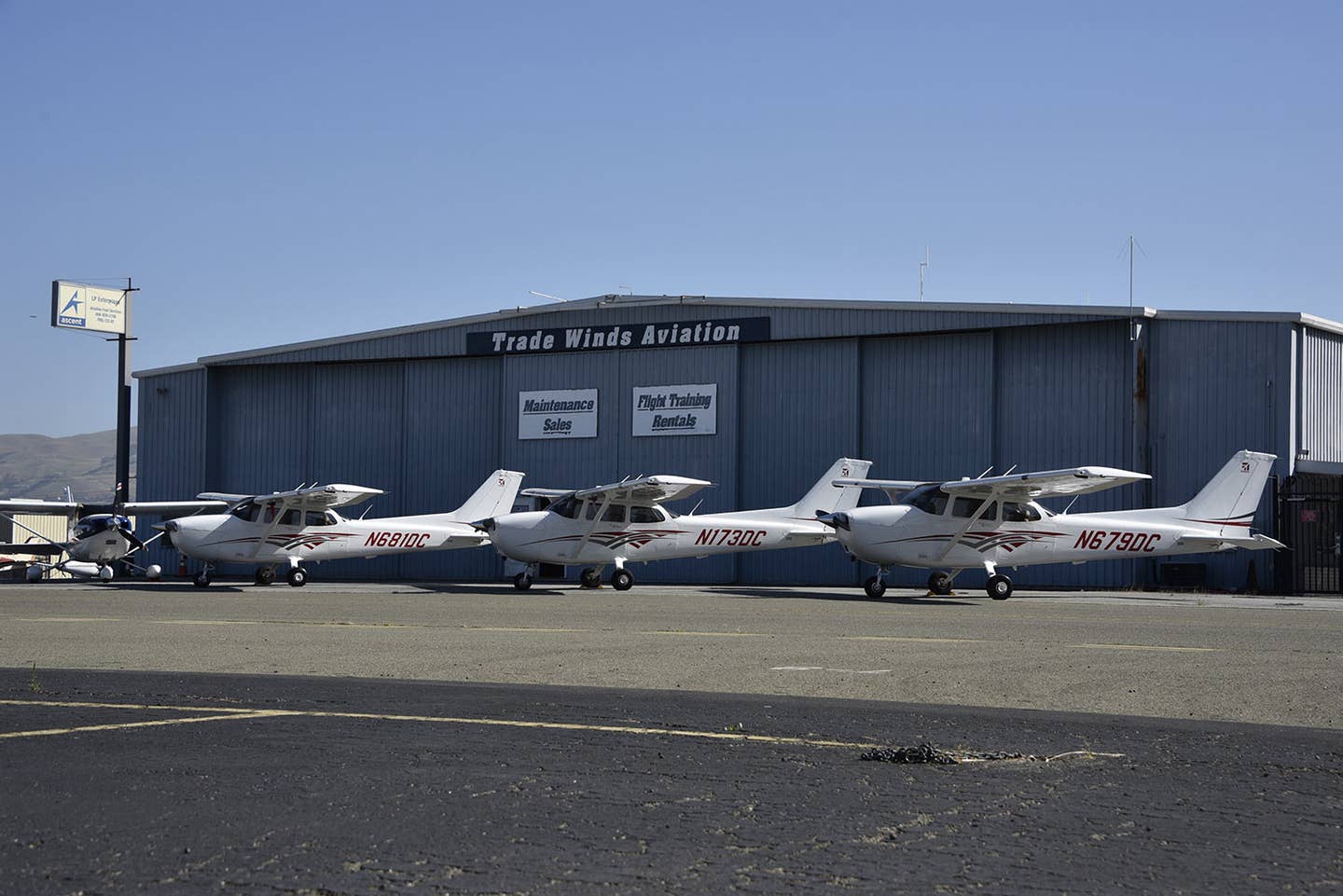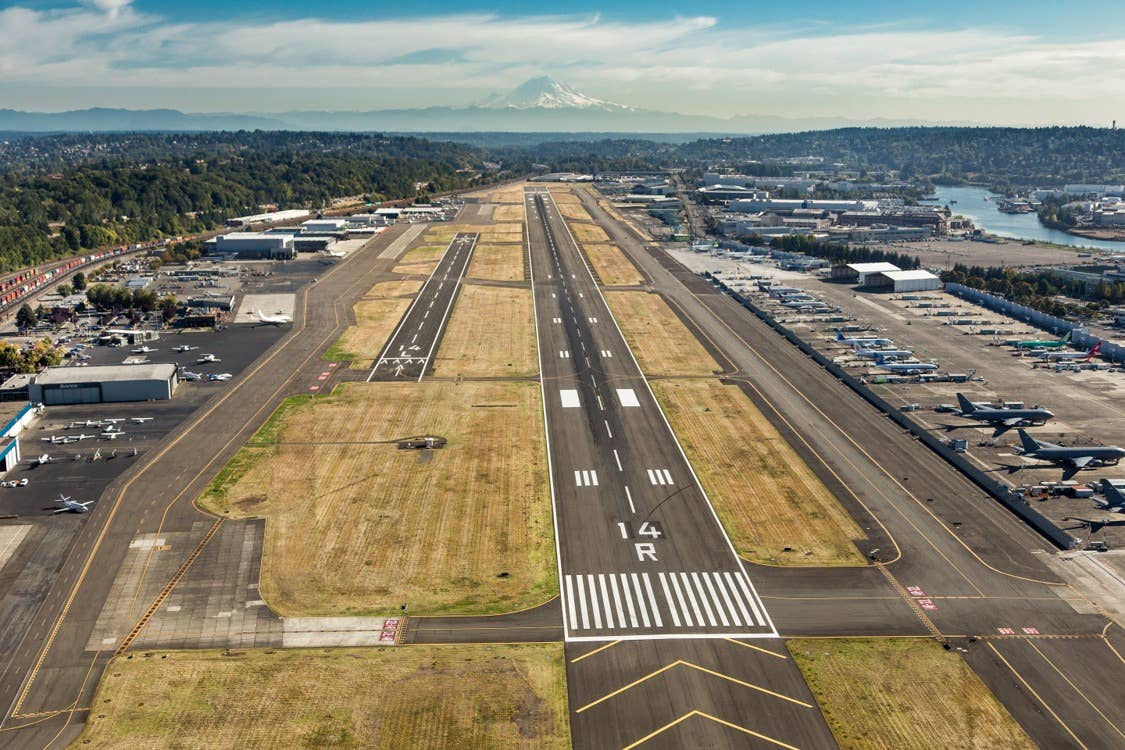Forest Fires Threaten Annual Fly-In
Smoke-generated IFR didn’t keep visitors from the annual event at Hood River.

An estimated 2,000 visitors attended this year’s event, which is a major fundraiser for the Western Antique Airplane and Automobile Museum at Ken Jernstedt Airfield / Hood River Airport (4S2). [Courtesy: Farron Brougher]
One of the challenges of flying a vintage aircraft is that, by modern standards, they are a little light on instrumentation that allow the pilot to safely traverse visual obscuration brought on by clouds or smoke—but that didn't stop visitors from attending the annual Western Antique Airplane and Automobile Museum (WAAM) annual fly-in held the weekend after Labor Day at Ken Jernstedt Airfield / Hood River Airport (4S2).
"We've had fly-ins impacted by adverse weather before," says WAAAM’s director Stephanie Hatch. "If people can't fly in, they drive in. This year we had 200 airplanes, which is a pretty good number. They represented a good variety, we had the older style biplanes and antiques that are near and dear to everyone like the Stearman to modern aircraft fly in."
It is estimated that approximately 2,000 people attended the event, which is a major fundraiser for WAAAM. The museum is located on the airport named after Oregon native Ken Jernstedt who, in 1941, resigned his position as a Marine Corps fighter pilot to volunteer with the Flying Tigers to fight in China. He was credited with multiple victories in the air and the destruction of 15 enemy aircraft on the ground. After the war, he returned to Hood River and became a successful businessman.
The airport has a paved runway 7/25 measuring 3,040 feet by 75 feet and a grass strip alongside, which makes it a great place for aircraft that go back to the golden age of aviation when turf runways were the norm, not the exception. The airport is a non-towered facility located along the Columbia River. The area is known for rapidly changing weather patterns that often involve rain, fog, and mist, and pilots who routinely fly in the area become adept at learning to read and evaluate weather forecasts.
The airport became a haven for vintage aircraft in 2007 when WAAAM opened. The museum was founded by Terry Brandt, an aviation enthusiast who wanted a lasting place for his aircraft collection and the opportunity to share it with other people.
The annual fly-in/drive in event attracts vintage aircraft and car owners from all over to show off their machines.
The pilots often fly in a day or so early and camp on site. This year an early arrival proved a good move because by Saturday, smoke from wildfires to the east and south filled the air over Washington and Oregon.
The smoke column extended thousands of feet in the area. Throughout the weekend, a low pressure system kept the particulate-laden air stagnant, resulting in ash falling in some areas and reduced visibility—conditions not favored by any aircraft, and certainly not those that are often open-cockpit and require navigation by visual references.
Participants of the fly-in noted that the air directly over the airport was flyable, but pilots who tried to depart the area often turned around and came back, because of the wall of smoke they encountered.
The pilots who were able to get in before the smoke settled did so using the visual NOTAM, which plainly depicted the visual reporting points near the airport, along with the warning that not all aircraft are equipped with radios—nor are they required to be as the airport lies in Class E airspace—therefore, all pilots were reminded to be extra vigilant.
Museum Brings Out Its Finest
This is not one of those fly-ins that relies on visiting airplanes, says Hatch, as the museum has over 325 large objects that are kept in flying and driving condition. All they have to do is open the hangar doors and move the aircraft, motorcycles, and cars out to the ramp.
Among the more rare aircraft are the newly acquired Ford Tri-Motor, the crowd favorite Stearmans, and on the automobile side, a 1914 Model T Ford, a Studebaker, and a smattering of muscle cars from the late 1960s and early 1970s that make you want to reach for your bell-bottom jeans and puka shell necklace.
Approximately 97 percent of the aircraft and two-thirds of the cars are owned by the museum; the others are on loan. The museum also has vintage engines on display for the gearheads who really want to get down to the heart of the machines.
One of the stars of this year's event was the Ford Tri-Motor. When it started up, people pulled out cameras and smartphones and captured its taxi and takeoff on video.
For the people who wanted a new perspective on the fly-in, there were also rides in the museum's 1930 New Standard.
"This was the first time we were able to do this," says Hatch."Our crew out there did an amazing job and a lot of people got to see the fly-in from the air which is really special."
Legacy Home for Vintage Aircraft
The Pacific Northwest has always had a strong vintage aviation contingency. For decades, Evergreen Field (59S) was located in Vancouver, Washington. The airport was founded in 1946 by Wally Olson. At the time, the airport was located outside the city limits. Olson made a name for himself as a flight instructor and it was known that if you wanted an antique airplane, you sought Olson's counsel as he knew who the best mechanics were, from spinner to tail and all the fabric in between, you could get your airplane repaired at Evergreen.
In 1964, the Northwest Antique Aviation Club (NWAAC) was founded at Evergreen. Once a year, pilots came from all over to show off their dawn of flight and golden age of aviation machines and swap pilot stories while sitting on a bench under "the tree of knowledge." The event was known as the Evergreen Fly-in.
Over the years, the open space that had surrounded Evergreen Field gave way to homes and industrial development. By the time Olson died in 1997, the airport was surrounded by suburbia. His heirs continued to operate the airport, but it wasn't long before they considered closing it and selling the property. By the early 2000s, the NWAAC started looking for other venues to host the annual antique fly-in, eventually settling on Hood River. Evergreen Field was closed in 2006—WAAAM opened its doors at Hood River in 2007 with the first annual Hood River Fly-In.
WAAAM Director Hatch says the museum helps fill the void left behind by the loss of Evergreen Field.
"You could say we are the successor to the Evergreen Fly-In," she says, adding that the facade of Olson's wooden hangar was saved from the bulldozer and is displayed at WAAAM, much to the delight of visitors who recognize the wooden doors and are compelled to share a story about Wally.
Fun at the Fly-In
It's not all fun and games at the fly-in—pilots have the opportunity to attend informational seminars covering safety topics. There is always a lot of food, usually put on by service clubs. But for the most part, the weekend is about seeing aircraft that represent the history of aviation and for the pilots to share their stories with visitors.
The event is a fundraiser for the museum. The price of admission ranges from $10 for youths ages 5-18 to $20 for adults and seniors, or a two-day admission deal of $25 for adults and $13 for youths. Admission to the fly-in includes access to the museum.
Visitors were also encouraged to vote for their favorite aircraft—this People's Choice Award is coveted among the visiting pilots. The winner gets a trophy.
This year, the 1931 Student Prince owned by Summer Martell of Port Townsend, Washington, took home the honor. When asked about the PCA, Martell responded with an Academy Award-style acceptance speech, saying, "I want to thank God and Kinner engines, and my wallet." The Student Prince also took home the award for Best Antique.
Martell is a corporate pilot who has been flying since her teen years. She was brought into aviation by her father, who told his daughter he decided to buy the Student Prince when he saw it in an open hangar and, "The airplane smiled at him."
When she was 18, she was on the television show Northern Exposure. The television show was set in Alaska but was actually shot in Rosalyn, Washington. Martell was the pilot double for Maggie, the character who was an Alaskan bush pilot.
Martell, who is also a designated pilot examiner, was encouraged by the number of younger vintage aircraft owners in attendance at the fly-in. "There were a lot of them in their 20s. It made me happy to see young people, young men and women in vintage aviation," she said.
Pilots like to play pranks on each other, and Martell inherited her father's puckish sense of humor. During the fly-in, she pranked a number of pilots using a toy snake that she herself had been pranked with in 2012 by a CFI who surreptitiously dropped the faux cobra into her flight bag. (Martell discovered the snake a month later during a check ride, uttering a scream which startled the applicant bringing some much-needed levity to a stressful situation.)
Using her People's Choice trophy as a microphone, she channeled for Dateline NBC as she interviewed one of the pranked pilots.
Fundraising at the Fly-In
As this story was slated for publishing, the revenue for this year's event was still being tallied, but it has already been earmarked for more museum expansion.
"We need the space," says Hatch. "We don't want to take out a loan or borrow money, so we raise the funds we need plus 20 percent before we even break ground."
If you would like to participate in the annual fly-in, put it on your calendar now—the event is always held the weekend after Labor Day.

Sign-up for newsletters & special offers!
Get the latest FLYING stories & special offers delivered directly to your inbox






